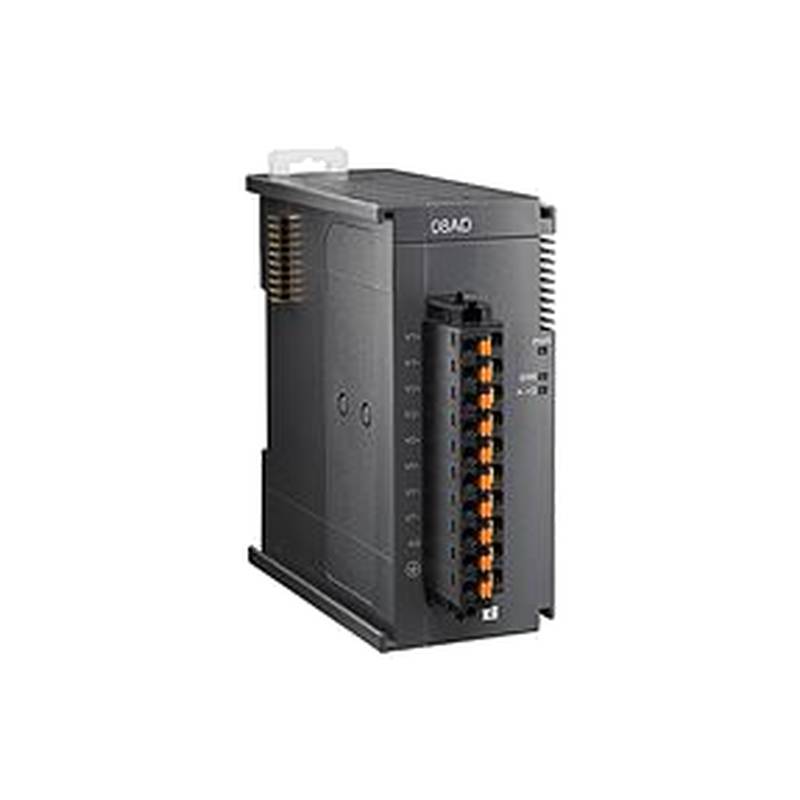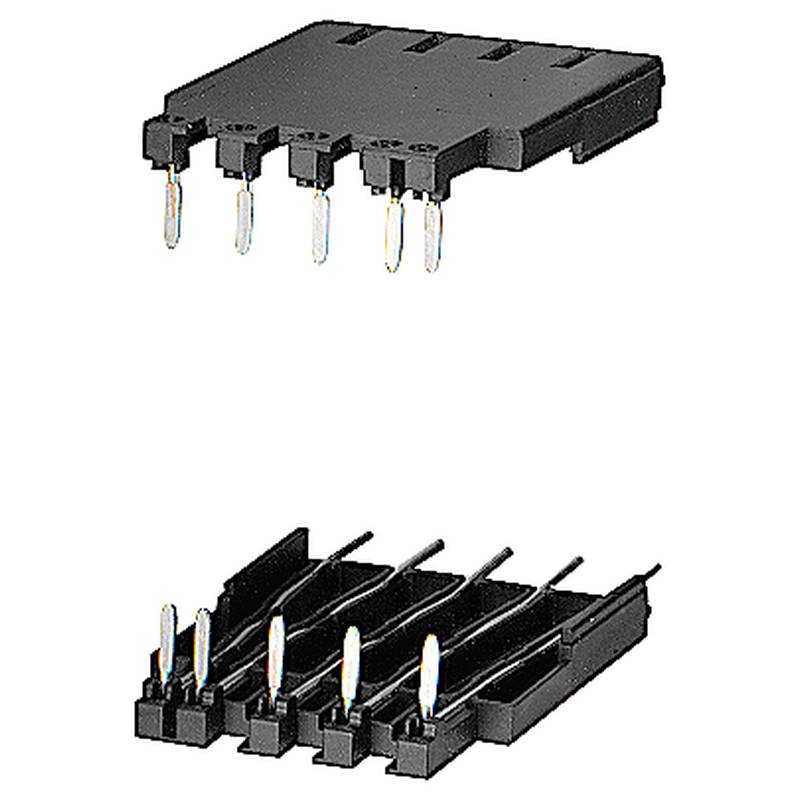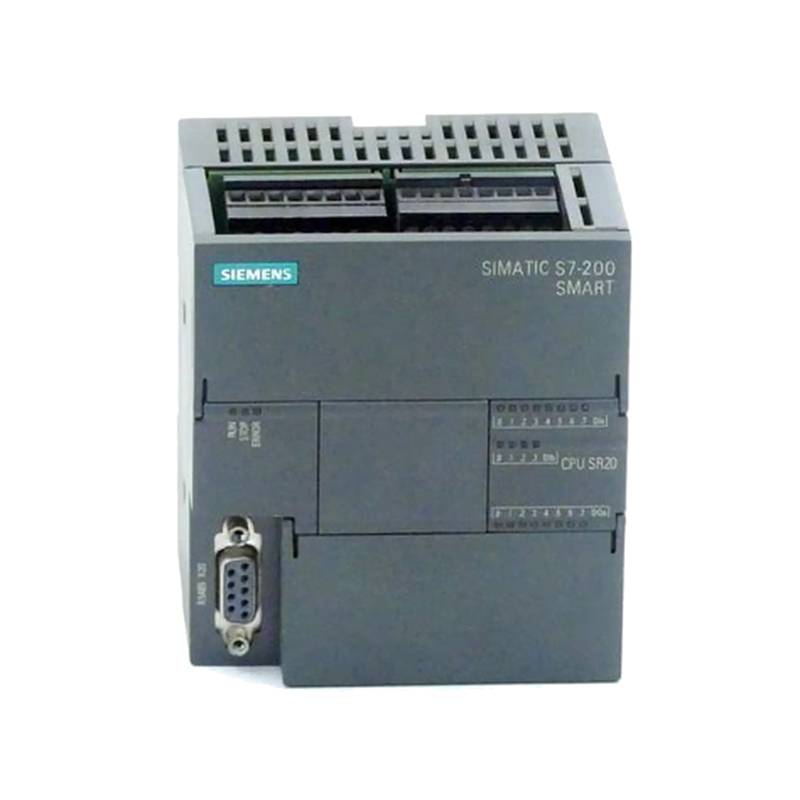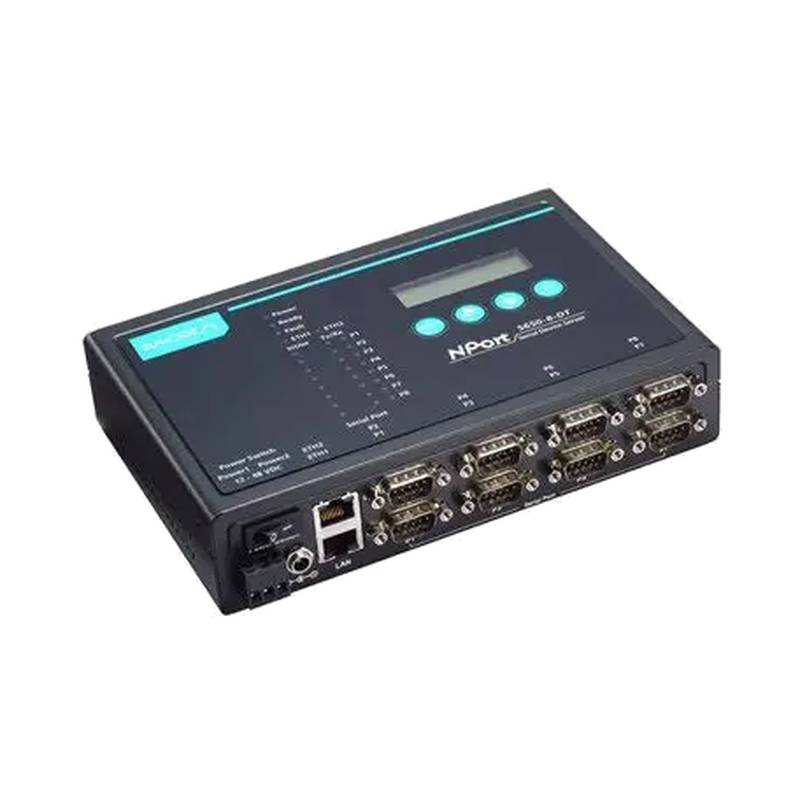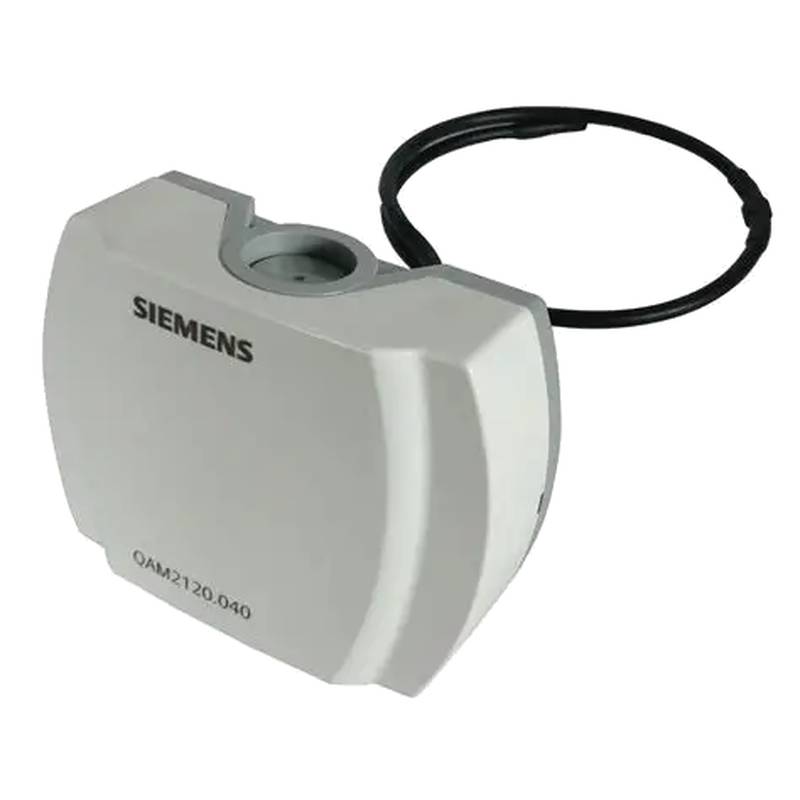
The Siemens 5SU1656-7KK10 is a high-performance Residual Current Circuit Breaker with Overcurrent protection (RCBO) designed for robust electrical safety in demanding industrial and commercial environments. This unit offers a precise 10A current rating and a sensitive 300mA residual current trip sensitivity, ensuring comprehensive protection against earth leakage faults. Its 1P+N (single-pole plus neutral) configuration, C-curve tripping characteristic, and 6kA short-circuit breaking capacity provide reliable safeguarding for circuits and connected equipment. The Siemens 5SU1656-7KK10 is engineered for easy integration into standard DIN rail mounting systems, making it an efficient choice for new installations and upgrades.
Product Specifications
| Feature | Specification |
| :--------------------------- | :----------------------------------------------- |
| Manufacturer | Siemens |
| Product Number | 5SU1656-7KK10 |
| Type | RCBO (Residual Current Circuit Breaker with Overcurrent protection) |
| Rated Current (In) | 10A |
| Rated Residual Current (I∆n) | 300mA |
| Number of Poles | 1P+N (Single-pole + Neutral) |
| Tripping Characteristic | C-Curve |
| Short Circuit Breaking Capacity (Icn) | 6 kA |
| Rated Voltage (Un) | 230/400V AC |
| Frequency Rating | 50/60 Hz |
| Mounting Type | DIN Rail Mounting |
| Degree of Protection (IP) | IP20 |
| Operating Temperature | -25°C to 45°C |
| Connection Type | Screw Terminals |
| Wire Cross-section | Up to 25mm² (fine-stranded) |
| Standards | IEC/EN 61008, IEC/EN 61008-2-1 |
| Type of Residual Current | Type A (detects sinusoidal AC and pulsating DC residual currents) |
| Dimensions | 90 mm (H) x 36 mm (W) x 77 mm (D) |
Core Features & Market Positioning
The Siemens 5SU1656-7KK10 RCBO distinguishes itself through its robust construction and adherence to stringent international safety standards, positioning it as a reliable component within Siemens' renowned SENTRON product line. Its Type A sensitivity ensures detection of both AC and pulsating DC residual currents, offering a broader spectrum of protection compared to Type AC devices. The integrated overcurrent protection, combined with earth leakage detection in a single modular unit, simplifies installation and reduces panel space requirements, a significant advantage in modern electrical systems where space is often at a premium. This dual-functionality enhances system availability by preventing nuisance tripping in scenarios with short-time glitches, thanks to its inherent design and Siemens' focus on product reliability.
Key Application Scenarios
This Siemens 5SU1656-7KK10 RCBO is ideally suited for a wide array of applications where enhanced electrical safety is paramount. It provides essential personnel, material, and fire protection in residential, commercial, and industrial settings. Specific applications include protection of lighting circuits, socket outlets up to 20A, and circuits for portable equipment, particularly in areas with increased risk of electric shock. Its capability to detect pulsating DC residual currents makes it effective for protecting circuits feeding modern electronic equipment, such as those found in offices, control cabinets, and specialized industrial machinery. The 300mA tripping sensitivity is particularly relevant for preventive fire protection in the event of insulation faults.
Practical System Integration Guidance
Installation of the Siemens 5SU1656-7KK10 RCBO is streamlined due to its DIN rail mounting capability and standardized dimensions, ensuring easy integration into existing or new distribution boards. The device accommodates connecting wires with cross-sections up to 25mm² for fine-stranded conductors, and up to 35mm² for solid/stranded conductors when using pin busbars. A key aspect of its design is the option for N connection on either the left or right side, facilitating flexible wiring configurations. Siemens offers a uniform range of accessories, including busbars and auxiliary switches, which can be easily added for expanded functionality, simplifying complex system setups. Proper termination involves ensuring secure connections to prevent overheating and ensure reliable operation.
Operation and Risk Mitigation
Operation of the Siemens 5SU1656-7KK10 RCBO is designed for clarity and safety. A clearly visible red RESET button on the handle serves a dual purpose: it indicates automatic tripping and allows for manual resetting after a fault has been cleared. Regular testing is crucial for ensuring the device's continued functionality. For standard operation, manual testing of the RCBO via the integrated TEST button should be performed half-yearly. In harsh ambient conditions, specific Siemens SIGRES RCCBs offer extended testing intervals. To mitigate risks associated with electrical installations, it is vital to ensure the rated current of the RCBO is not exceeded by continuous load, and that appropriate thermal overload protection devices are in place.
Scalability & Long-Term Value
The Siemens 5SU1656-7KK10 RCBO is part of the broader SENTRON portfolio, which is designed for seamless scalability and long-term integration within Siemens' electrical infrastructure solutions. Its modular design allows for easy expansion with accessory components, such as auxiliary switches or fault signal contacts, for enhanced system monitoring and control. The compatibility with standard busbar systems simplifies upgrades and replacements, ensuring longevity and adaptability. Furthermore, Siemens' commitment to innovation means that components like this RCBO are designed with future system enhancements in mind, including potential integration with digital monitoring and IIoT solutions offered within the broader Siemens ecosystem, ensuring continued value and operational efficiency.
---
FAQs
What is the primary function of the Siemens 5SU1656-7KK10 RCBO?
The Siemens 5SU1656-7KK10 RCBO provides combined protection against overcurrents and earth leakage faults. It ensures safety by detecting abnormal current flow to the earth and interrupting the circuit. This dual protection safeguards both personnel from electric shock and equipment from damage.
This device is essential for preventing electrical fires caused by insulation failures or grounding issues. Its 300mA sensitivity is specifically designed for fire protection applications. It offers a higher level of safety than standard circuit breakers alone.
The combination of overcurrent and earth leakage protection in a single unit simplifies installation and reduces the required space in electrical panels. This makes it a practical and efficient choice for various applications.
What type of residual current does the 5SU1656-7KK10 detect?
The Siemens 5SU1656-7KK10 is a Type A residual current device. This means it can detect both sinusoidal AC residual currents and pulsating DC residual currents. This capability is crucial for modern installations.
Many electronic devices, such as computers and variable speed drives, can generate pulsating DC residual currents. A Type AC RCD would not reliably detect these faults. Type A provides enhanced protection against such leakage currents.
By detecting both AC and pulsating DC faults, the Type A characteristic offers a more comprehensive safety solution. It is suitable for a wide range of applications, including residential, commercial, and light industrial settings.
What are the key technical specifications for the Siemens 5SU1656-7KK10?
This RCBO has a current rating of 10A and a residual current sensitivity of 300mA. It features a C-curve tripping characteristic for overcurrent protection and a short-circuit breaking capacity of 6kA. The device is designed for a 230/400V AC system.
It operates as a 1P+N (single-pole plus neutral) device, suitable for single-phase circuits requiring neutral conductor switching. The enclosure provides IP20 protection, meaning it is protected against solid objects larger than 12.5mm.
The unit is designed for standard DIN rail mounting and can accommodate wire cross-sections up to 25mm². It operates within an ambient temperature range of -25°C to 45°C.
What type of applications is the 5SU1656-7KK10 best suited for?
The 5SU1656-7KK10 is highly suitable for general-purpose protection in residential and commercial buildings. It provides essential safety for circuits feeding socket outlets and lighting. Its 300mA rating makes it ideal for fire protection.
In industrial environments, it can protect circuits against earth leakage and overloads, particularly where modern electronic equipment is present. The Type A functionality is beneficial for detecting faults from devices with electronic components.
This RCBO ensures personnel safety by rapidly disconnecting power during earth faults. It also protects fixed electrical installations and electrical equipment from damage due to overcurrents and short circuits.
How is the Siemens 5SU1656-7KK10 installed?
Installation involves mounting the RCBO onto a standard 35mm DIN rail within an electrical distribution board. Ensure the device is properly secured and oriented for optimal performance and accessibility.
Connect the incoming live and neutral conductors to the designated terminals on the top of the device. Similarly, connect the outgoing live and neutral conductors to the respective terminals at the bottom. Follow local electrical codes and manufacturer guidelines for proper wiring.
Before energizing the circuit, perform a manual test of the RCBO using its integrated TEST button to verify its functionality. Ensure all connections are tight and insulated to prevent accidental contact and ensure reliable operation.
What is the significance of the 300mA residual current rating?
A 300mA residual current rating signifies the threshold at which the device will trip to interrupt the circuit. This sensitivity is higher than the 30mA typically used for personal protection. It is primarily intended for preventive fire protection.
In cases of insulation faults or significant leakage currents, a 300mA trip can prevent overheating and potential fires. This makes it a critical safety measure for ensuring the integrity of electrical installations and preventing property damage.
While not the primary choice for direct personal protection, it still contributes to overall safety by mitigating fire risks. For enhanced personal protection against direct contact, lower rated residual current devices (e.g., 30mA) are recommended.
What does the "C-Curve" tripping characteristic mean for this RCBO?
The C-curve characteristic of the Siemens 5SU1656-7KK10 indicates its behavior under overcurrent conditions. It is designed to tolerate inrush currents typically encountered with inductive loads, such as motors, without tripping unnecessarily.
This means the device will trip when the current reaches 5 to 10 times the rated current (10A), allowing for temporary surges common in motor startups. However, it provides rapid protection against short circuits.
This characteristic makes the RCBO suitable for circuits with moderate inductive loads, offering a balance between sensitivity to faults and tolerance to normal operational surges.
What is the breaking capacity of the 5SU1656-7KK10?
The Siemens 5SU1656-7KK10 has a short-circuit breaking capacity of 6kA. This rating indicates the maximum fault current the device can safely interrupt without sustaining damage.
A 6kA rating is generally sufficient for many residential and commercial electrical installations. It ensures that the RCBO can effectively protect the circuit and downstream components from severe fault conditions.
It's important to ensure that the anticipated fault current in the installation does not exceed this 6kA rating. In systems with higher potential fault currents, a device with a higher breaking capacity would be necessary.
Can the 5SU1656-7KK10 be used for personal protection?
While the 5SU1656-7KK10 offers residual current protection, its 300mA trip sensitivity is primarily for fire protection. For direct personal protection against electric shock, devices with a lower rated residual current, such as 30mA, are typically recommended.
According to safety standards, RCDs with a rated residual current of up to 30mA are generally used for additional protection against direct contact. The 300mA version prioritizes preventing fires from insulation faults.
It's best practice to use appropriate RCDs for specific protection needs. For circuits where direct contact risk is significant, a 30mA RCD or RCBO should be installed in conjunction with the 300mA unit if fire protection is also required.
What are the advantages of using a Type A RCBO like the 5SU1656-7KK10?
A Type A RCBO, such as the 5SU1656-7KK10, offers enhanced protection by detecting both AC and pulsating DC residual currents. This is a significant advantage over older Type AC devices.
Modern electronic devices commonly generate pulsating DC currents. Without a Type A RCD, these faults might not be detected, posing a safety risk. The Type A ensures broader detection capabilities for contemporary electrical loads.
This increased detection capability makes Type A RCBOs a more versatile and safer choice for a wider range of applications, from homes to offices and various industrial settings with evolving technologies.
















